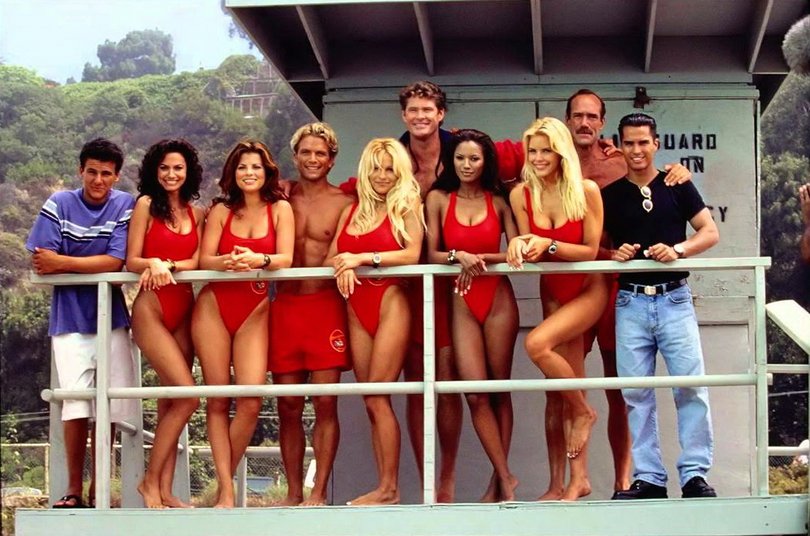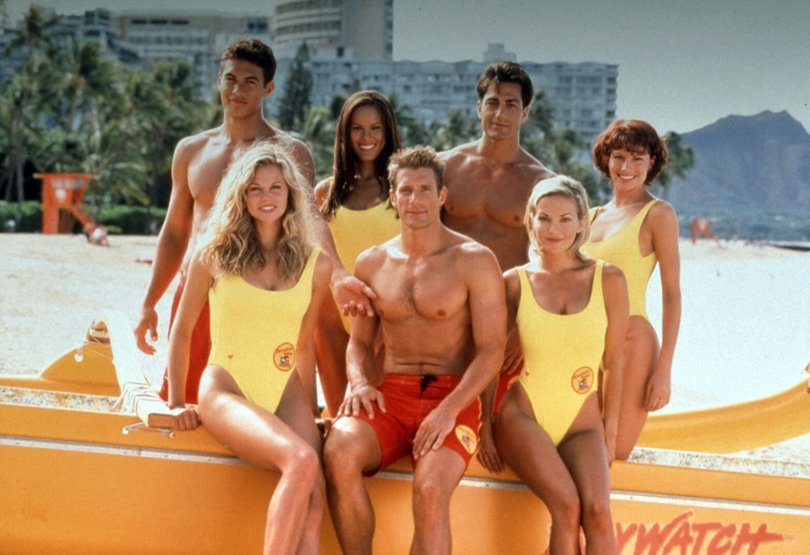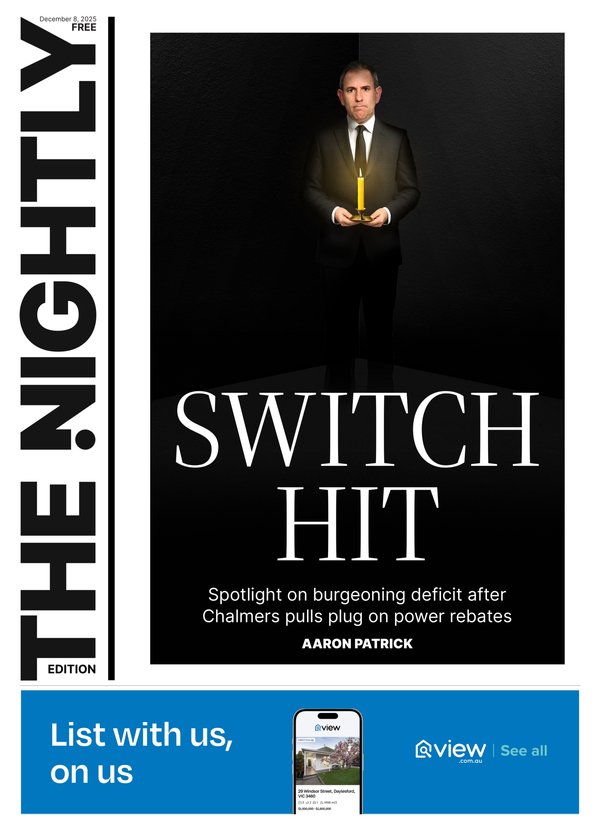Baywatch had a billion viewers around the world, but it was cancelled after first year

If Greg Bonann hadn’t been at the right place at the right time, one of the biggest pop cultural phenomena of the 1990s would never have happened.
Bonann was a lifeguard in 1977 at Will Rogers State Beach in California when he ran, presumably at regular speed, to save two kids. They were the children of Stu Erwin, a TV executive who worked for the company behind The Mary Tyler Moore Show.
It was a foot in the door, and he learnt all about the business of show, and eventually pitched the one thing he always wanted to make, a TV series about lifeguards.
Sign up to The Nightly's newsletters.
Get the first look at the digital newspaper, curated daily stories and breaking headlines delivered to your inbox.
By continuing you agree to our Terms and Privacy Policy.It’s been almost a quarter of a century since the series wrapped up (the less said about that 2017 Dwayne Johnson movie the better), and now it’s getting a facelift.
US network Fox has greenlit a 12-episode reboot season that’s set to debut in late 2026. The show will be run by Matt Nix, a TV writer best known for Burn Notice, so you know he can do a propulsive action procedure show.
The original series is now something of a cultural artifact, something everyone had at least a passing familiarity with – it’s often said at its peak, Baywatch had a billion viewers around the world – even if they weren’t glued to it week-in-week-out.
It comes up in conversation with a bit of an eyeroll but you see a high-cut red onesie swimsuit and you know what it represents.

Baywatch premiered in 1989, first with a TV movie and then a 21-episode season on US network NBC. What many people forget, given the juggernaut it would go on to become, is that it was cancelled after that first run.
The production company ran out of money and couldn’t afford to keep funding a series that was mostly shot on location while the US ratings were soft. But the producers, which also included Michael Berk and Douglas, were approached by international networks who wanted more. In territories outside of the US, it was already huge.
Berk bought the rights back for $10, got Hasselhoff on board who agreed to cut his salary in half for executive producer rights, and cobbled together the financing to make it on their own for not another network but the first-run syndication market, which allowed the team to sell directly to international stations.
It was back, and it was a force. It became iconic less for its soapy storylines and more for its casting, and also, of course, for that slow-motion running on the beach.
Alexandra Paul, who played Stephanie Holden for four seasons, told Esquire in 2012, “You had to really know how to run in slow-motion. You couldn’t run really fast, otherwise your cheeks would go up and down too much … you run slower, you have to have a look on your face that says, ‘Yay, you’re a hero!’.”

The show was freed from the constraints of American network television (but had other conditions imposed on it such as Britain’s ITV stipulating no guns), it leaned more into its display of buxom babes and sculpted Adonises.
Pamela Anderson missed half a dozen auditions before she finally turned up and joined the cast in season three as CJ Parker, and the producers were more than willing to wait. Anderson recalled that the show had pursued her since her Playboy days.
Anderson said she and Hasselhoff were the only ones who didn’t complain about doing water scenes – she had grown up swimming in much colder climes on Vancouver Island. Season one star Shawn Weatherly even left the show after 18 episodes because the early mornings and the cold water became a deal breaker – the wrote her out in a shark attack plotline.
When Anderson was married to Tommy Lee, he would be a disruptive presence whenever he visited set. In one incident, Lee destroyed Anderson’s trailer after he became incensed over her shared scenes with ex-boyfriend David Charvet, and was kicked out by security. He was then barred permanently.
Some of the actors were paid as little as $2500 to $5000 an episode but there were other lucrative side hustles. Traci Bingham recalled being paid $340,000 in cash just to sign autographs for an hour in Europe.
The series had a two-way pipeline with Playboy, casting models that had appeared in the magazine, while the publication would approach the show’s actors to pose for its pages.
The producers have admitted they cast people based on how they looked (Gena Lee Nolin was cast because they had seen her as a model on The Price Was Right), but ultimately it limited them on what they could write for people such as Carmen Electra and Michael Bergin.

Schwartz said, “They would look good in a swimsuit, they can do the action, they could swim. They just, as actors, were not strong enough, so we wouldn’t give them big storylines.”
Towards the end of the 1990s, the series’ cultural power was waning. Anderson had left, so had Paul and the constant rotation of its cast and the longevity of the show was starting to wear thin on audiences.
To keep the brand going but tamp down on costs, Baywatch started to explore whether it could move the production away from its expensive Los Angeles home.
One option was Australia and the filmmakers wrote a backdoor pilot as part of a double-episode special during season nine in which Hasselhoff and some of the cast would visit Sydney.
The filming took in late 1998, including three days at Avalon in Sydney’s Northern Beaches. It was a test-run and the production was keen to move the whole show down under, using the local surf club as its base.
The Northern Beaches is nicknamed the Insular Peninsula for a reason. With only two roads in and out, the residents prefer to keep to themselves and they were very opposed to the possibility of Baywatch moving in for eight months of the year.

According to the BBC at the time, 1700 “angry locals” packed out a public meeting at Barrenjoey High School to let their opposition be known. One dissenter shouted at Bonann, “We don’t want you here!”.
Among the concerns was the disruption to the local community. One person objected that the production had rolled in 15 trucks compared to Home and Away, which films at the nearby Palm Beach, which had three.
Ultimately, Hawaii swooped in and enticed the filmmakers to move to its shores, where it lasted another two years. Hasselhoff made the move to America’s 50th state, but most of the cast was switched out for new faces, including a young Jason Momoa.
Hasselhoff opted to leave the show at the end of that first Hawaiian season and his character was given a murky send-off, presumed killed by an underwater bomb when he didn’t resurface but bits of his swim trunks did. Hasselhoff didn’t know about Mitch’s fate until his stunt double told him.
But the “death” was retconned for the TV movie which followed, Baywatch: Hawaiian Wedding which reunited many of the series’ most famous cast including Anderson and Electra.
There is no world in which the reboot series could possibly reach a billion global viewers – that’s just not how we do TV anymore – but it is riding on the legacy of a show that at one point, was the most watched series in the world.

